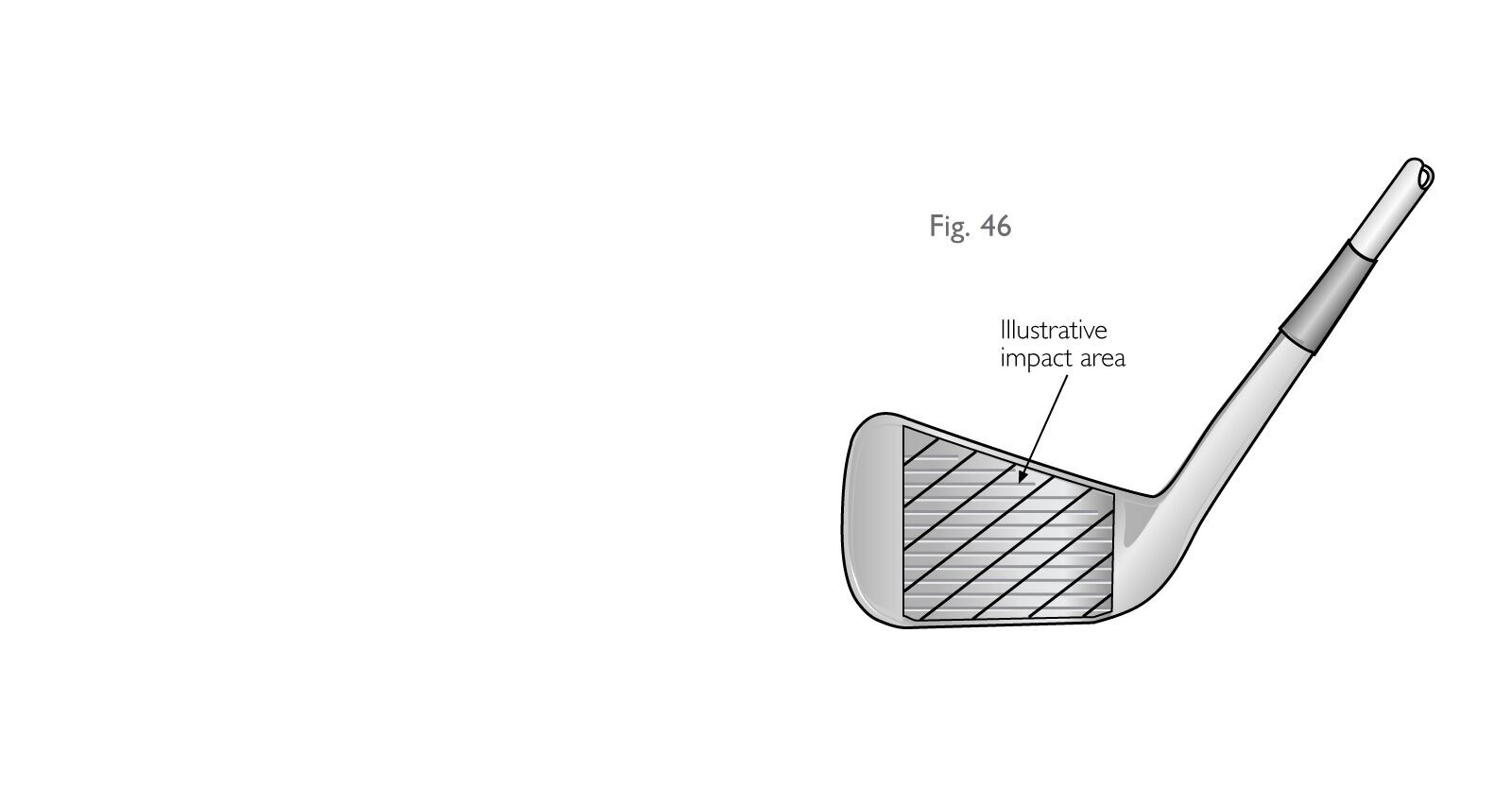(ii) Punch Marks
-
The maximum dimension of any punch mark must not exceed 0.075 inches (1.905 mm).
-
The distance between adjacent punch marks (or between punch marks and grooves) must
not be less than 0.168 inches (4.27 mm), measured from centre to centre.
-
The depth of any punch mark must not exceed 0.040 inches (1.02 mm).
-
Punch marks must not have sharp edges or raised lips.
-
*For clubs that have a loft angle greater than or equal to 25 degrees, punch mark
edges must be substantially in the form of a round having an effective radius which
is not less than 0.010 inches (0.254 mm) when measured as shown in Figure 50, and
not greater than 0.020 inches (0.508 mm). Deviations in effective radius within 0.001
inches (0.0254 mm) are permissible.
Note 1: The groove and punch mark specifications above indicated by an asterisk (*)
apply only to new models of clubs manufactured on or after 1 January 2010 and any
club where the face markings have been purposely altered, for example, by re-grooving.
For further information on the status of clubs available before 1 January 2010, refer
to the ‘‘Equipment Search’’ section of www.randa.org or “Club and Ball Lists” section
of www.usga.org.
Note 2: The Committee may require, through a Model Local Rule, that the clubs the
player carries must conform to the groove and punch mark specifications above indicated
by an asterisk (*). This Local Rule is recommended only for competitions involving
expert players. For further information, refer to the Committee Procedures, Section 8, Model Local Rule G-2 in The Official Guide to the Rules of Golf.



